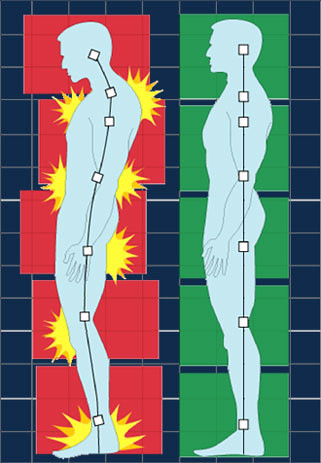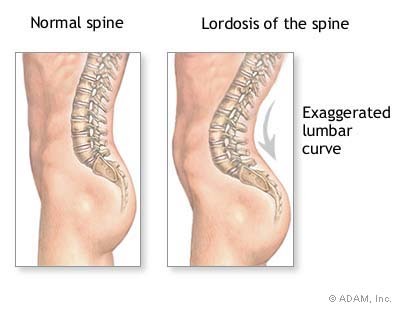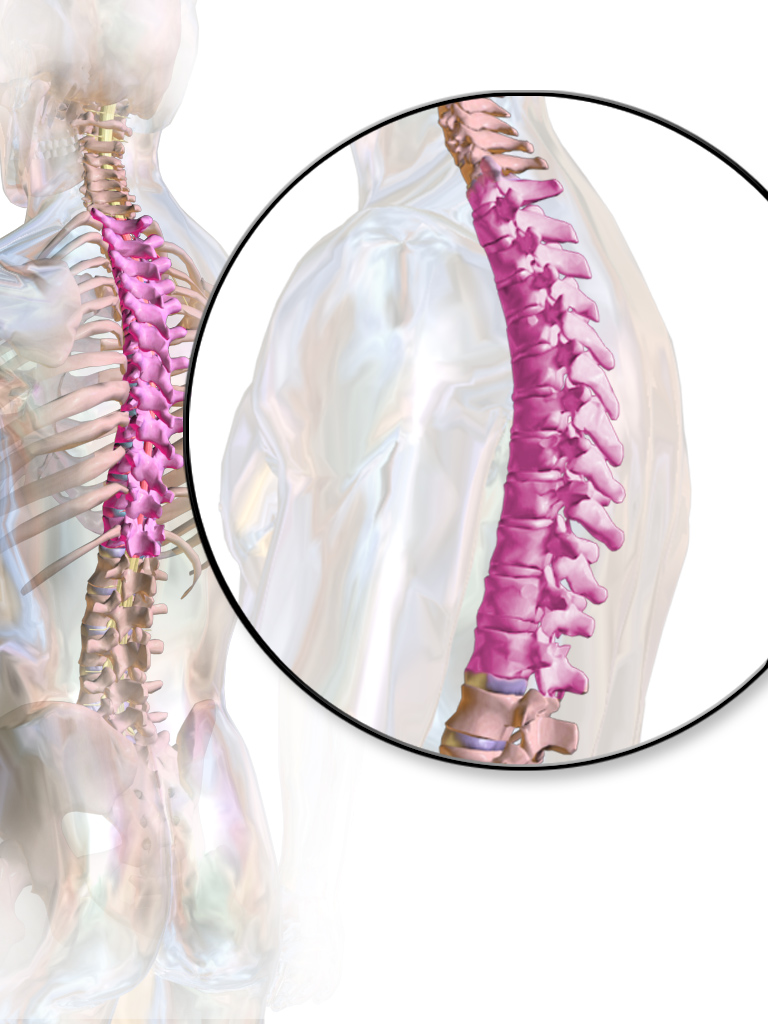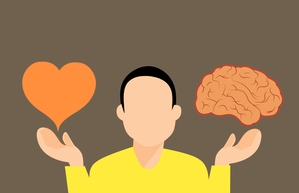Set the Scene
Squat day comes round again. You’ve been working on all of the exercises laid out (except for your thoracic spine exercises) and the squat always seems to be your least favourite. It’s not the reps, or even the complexity of the exercise, it’s simply the fact that once you hit a heavier weight (anything above 85% of your max) – you feel like you’re being crushed under the weight.
You have the strength in your legs – you’ve worked on them tirelessly.
Your core is the strongest it’s ever been – you train it damn near every day.
What is the problem?
WHAT?
Learn the topic.
- Cervical (Skull and Neck)
- Thoracic (Chest Cavity/Rib Cage/Shoulders)
- Lumbar (Lower Back/Mid Section into Pelvic Girdle)
- Sacrum
- Coccygeal
T Spine
The thoracic spine itself consists of 12 vertebrae, starting at your lower back and finishing just above the shoulders/base of the neck.
It’s primary functions consist of:
- Housing the spinal cord (with key nerves such as the intercostal nerve originating here)
- Anchor for the rib cage and protecting the vital organs
- Assists in breathing and respiratory function.
- Attachment for the following muscles: erector spinae, interspinales, intertransversarii, latissimus dorsi, multifidus, rhomboid major, rhomboid minor, rotatores, semispinalis, serratus posterior superior/inferior, splenius capitis, splenius cervicis, and trapezius.
In other words…it’s quite important.
Pain vs. Origin of the Issue
In the world physical fitness, we focus our attention primarily on areas that cause us discomfort or pain. When we look at the spine, the two major areas of complaint tend to be the lower back or the neck. As a result, this is where we focus most of our attention.
However, as listed above, the functions of the thoracic spine may provide us a clue to being the source of the problem.

UpStream, Down Stream
To add to that, when we look at an area of pain, many rehabilitation experts advocate a doctrine known as “Up Stream (i.e. above the affected area), Down Stream (i.e. below the affected area)”. What is the common site for both neck and lower back pain?
The thoracic spine, meeting right in the middle.
What is Thoracic Extension?
Each of the spinal regions exists with natural curves that form during our development and growth.
Primary Curves are “flexion biased” – in other words, they are the things that tend to cause “rounding over”.
The two primary curves are the thoracic spine and the sacrum. They are named primary curves, due to being the first noticeable structures forming in the spine during fetal development.
Secondary Curves are “extension biased” and form after childbirth at key developmental stages such as lifting the head, sitting upright and learning to walk (Taylor, 1975). The two major secondary curves are the cervical and lumbar (i.e. neck and lower back).
So, keeping this in mind, we know that the spine is supposed to express a natural degree of curvature. This is crucial to allow the existence of both stability and mobility.
To move freely when needed, and then to position itself as a stacked, tensile structure when called upon.
So where are the issues? Why do we need extension?
Knowing What is Normal
Look around you to the people you see day to day (not in a creepy way, just observe).
For all the postural defects that tend to occur such as forward head posture, hyperextended lower backs, etc. none are as common as thoracic hyperkyphosis. A nerdy sounding word I know, but this is a term that characterizes rounding of the shoulders, a sunken chest cavity, and a general, stooped posture.
In order to know what is wrong, we first need to know what’s right.
A well-balanced posture, particularly with the T Spine should look like the following:

Now…I know there is always going to be individuality here. Everyone is different and therefore, there is a degree of leniency.
However, alignment is all we are after. Not perfection.
We simply want the following:
- The Skull to be Centred appropriately on the neck and cervical vertebrae.
- The neck to be in line with the thoracic spine.
- The thoracic spine to be positioned above the lumbar vertebrae.
There is a reason why each vertebral segment gets thicker, the further down the spine you go – it has to support the structures above it.
Considering a vast majority spend their time in thoracic flexion, hunching over their desks, sitting on their phones, encountering stressful situations daily – cueing to extend will, most of the time, return them to neutral.
So, we know about alignment and we know that the thoracic spine is a pretty big chunk of the spine… so aside from protecting the organs, why is it so important?
WHY?
Learn the science and theory.
Abdominal Control
A little known factor about 4 of the major core muscles is that all influence (and are influenced by) thoracic spine position.
- Rectus Abdominis A.K.A – “6 Pack”
- Transverse Abdominis A.K.A – “Deep Core”
- External Obliques A.K.A – “V Lines”
- Internal Obliques A.K.A – “Deep V Lines”
Each of them, are innervated by nerves that originate from your “thoraco-abdominal nerves”, branching from lower 6 thoracic vertebrae, namely T6-L1 (Sakamoto, 1996; Rozen, 2008).
In other words, if you want to make sure you’re optimally using your abs, both in lifting and also whilst looking to build the 6-pack you have always wanted – you’ve gotta pay attention to your T-Spine bro.

By Henry Vandyke Carter - Henry Gray (1918) Anatomy of the Human Body (See "Book" section below)Bartleby.com: Gray's Anatomy, Plate 821, Public Domain, https://commons.wikimedia.org/w/index.php?curid=541677
Breathing
If your not performing thoracic spine exercises, meaning it is out of line and your have limited mobility, it may be hindering your breathing.
In this instance, it’s a chicken and the egg scenario, we won’t always know which came first, but empirical research has found a positive correlation between thoracic spine exercises & mobility and your maximal voluntary ventilation (Wirth et al., 2014).
So if you have poor posture, your breathing pattern may be the first place to start.
Resisting the Weight
With everyone I work with, I use the following phrase:
Everything below a weightlifting belt lifts the weight, and everything above resists it.
Although this is a huge oversimplification, it’s a great way of understanding what and how different muscles contribute to loaded movement.
Physics 101 – Newton
Physics can teach us a thing or two. When it comes to lifting and building your strength Newton’s Laws are quite important.
Just a quick recap:
- Law of Inertia – A body will remain stationary or in constant motion, unless an external force is acted upon on it. In other words, unless you overcome the inertia of the barbell on the floor (i.e. a deadlift) it will stay still.
- Law of F=ma – Force = mass x acceleration. The faster you accelerate the same weight, the more force you apply. The heavier the mass you lift, the more force you’ll apply.
- Law of Action-Reaction = For every action, there is an equal and opposite reaction.
Newtonian Law shows that we have to resist the amount of force the weight is applying back to us. It’s not always about pushing and pulling.
We all focus on how to lift.
On what we can do to apply maximum force to the barbell, stone, dumbbell or whatever else you want to lift. But have you ever paid any mind to what the weight is doing back to you?
Not only does your ability to resist the weight influence your postural mechanics throughout the course of an exercise, which will ultimately have a knock-on effect to your leverage, but it’s also one of the biggest factors that determines your injury risk.
For every Newton (N) of force you apply to the weight, the same amount is being redirected, right into your own body - it's not just about lifting, but resisting.

Everything You Ever Wanted
Finding common ground across exercises and movement patterns can be difficult. They (and each individual) are so unique, that forming a systematic approach poses a problem. The squat and the deadlift may look similar in terms of the lower limb, but surely, there’s no commonality between those two…and the bench press, right?
Tension Factors are common principles that influence your strength, across every exercise. An example we’ve mentioned before is your grip – it directly influences your output.
Thoracic spine exercises teach a stronger position in which to lift.
Learning how to assume and maintain a strong amount of extension through thoracic spine exercises, keeps the spine in a stacked position, reducing the risk of injury but also directly improving your strength.
Want to know how to make your bench press stronger? Squeeze your upper back with the correct thoracic spine exercises and extend your T Spine.
Want to know how to improve the start position of your deadlift? Squeeze your upper back with the correct thoracic spine exercises and extend your T Spine.
Spread your Wings – The Lats
Thoracic extension also has a significant bearing on the “angle of pull” for the lats.
If you have shortened/excessively tight lats and a hyperkyphotic posture, then you’re going to have a hard time getting them involved exercises that require a decent amount of mobility such as in pull-ups (or any other exercise for that matter).
Remember, the shorter/tighter the muscle is, the less force it can effectively produce, particularly when challenging a range of motion.
The lats originate from the thoracic T7-T12, 9th to 12th ribs, lumbar and sacral vertebrae (via thoracolumbar fascia), and the posterior third of the external lip of the iliac crest. In other words, the lats cover a pretty wide area and have a pretty big bearing on how you perform during exercise.
It also means the lats have a large effect on lumbar and sacral position and in turn, glute activation (do Carmo Carvalhais et al., 2013).
If you want good control of your lats, you need to be doing your thoracic spine exercises.

Lower Back Hyperextension
Lastly, you might see that you occasionally get back pain, yet your lower back itself never rounds over?
If this is the case, chances are you may be a victim of overextension.
This is where you over-arch in your lower back and can have a multitude of different causes. One of which is a compensation for restrictions elsewhere – like, the thoracic spine.
Going back to the brief point on primary and secondary curves, if one primary curve becomes more extreme (i.e. more flexed), then the body, in a bid to save itself from degradation and damage, will exaggerate a secondary curve in the opposite direction.
Shoulders rounded over? Chances are your lower back is going to become hyperextended sometime soon as well.

HOW?
Learn the implementation.
Learning Thoracic Spine Exercises
Cueing is the solution.
Probably the biggest issue I’ve seen people present when it comes to thoracic spine exercises is simply understanding “How to Do It”.
As with all areas of the body, the weaker the area, the harder it is to coordinate and “feel” working – literally understanding, what moves where and how it should feel can be a big enough challenge.
So, if you follow the sequence below, you should be good to go.
Step 1 = Start with Scapula Retraction
Although technically a different movement entirely, retracting your shoulder blades is a great way of beginning to feel what’s actually happening during thoracic spine exercises – tightening your upper back.
Do the following exercises –
Banded Pull Aparts
T Flys
Scapula Retraction w. Weight
Step 2 = Mobilise The Area
An area of tightness doesn’t function well. Mobilising your T Spine through extension and rotation will help improve the connection to your thoracic region.
Pec Minor Stretch
Eccentric Pullover w. Abdominal Control
Step 3 = Learn abdominal Bracing and “Stacking”
Bracing your abs/stomach and making sure you maintain control is essential to make sure that you don’t overextend your lower back during the thoracic spine exercises.
Step 4 = Perform some basic thoracic spine exercises
Which one and what you do is less important than how you do it.
- On each drill, focus on squeezing your upper back.
- Bracing your abs.
- Lifting your chest/sternum high.
Reverse Elbow Pressups
Posterior Plank
Scapula Pullups
NOTE – These thoracic spine exercises are far from exhaustive. There are literally hundreds of options available, but through experience, I’ve found the most important thing to be: the order you do them in.
When performing thoracic spine exercises, it’s important to ensure you’re switching on the right muscles at the right time.
Reference List
- do Carmo Carvalhais, V. O., de Melo Ocarino, J., Araújo, V. L., Souza, T. R., Silva, P. L. P., & Fonseca, S. T. (2013). Myofascial force transmission between the latissimus dorsi and gluteus maximus muscles: an in vivo experiment.Journal of biomechanics, 46(5), 1003-1007
- Rozen, W. M., Tran, T. M. N., Ashton, M. W., Barrington, M. J., Ivanusic, J. J., & Taylor, G. I. (2008). Refining the course of the thoracolumbar nerves: a new understanding of the innervation of the anterior abdominal wall. Clinical Anatomy: The Official Journal of the American Association of Clinical Anatomists and the British Association of Clinical Anatomists, 21(4), 325-333
- Sakamoto, H., Akita, K., & Sato, T. (1996). An anatomical analysis of the relationships between the intercostal nerves and the thoracic and abdominal muscles in man. II. Detailed analysis of innervation of the three lateral abdominal muscles. Cells Tissues Organs, 156(2), 143-150
- Wirth, B., Amstalden, M., Perk, M., Boutellier, U., & Humphreys, B. K. (2014). Respiratory dysfunction in patients with chronic neck pain–Influence of thoracic spine and chest mobility. Manual therapy, 19(5), 440-444
- Taylor, J. R. (1975). Growth of human intervertebral discs and vertebral bodies. Journal of Anatomy, 120(Pt 1), 49.





